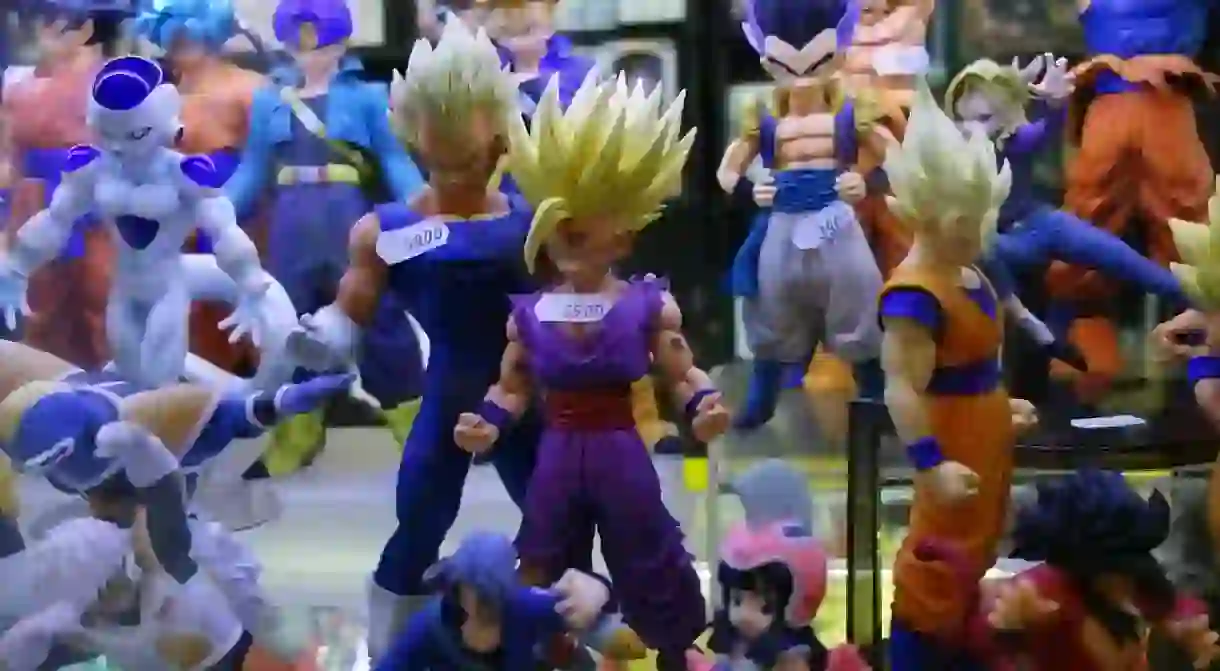The Evolution of the Male Hero in Anime

This year, legendary martial arts splatterfest Hokuto no Ken celebrates its 35th anniversary. In the West, we know it by another title: Fist of the North Star.
Like an almighty punch administered by its protagonist Kenshiro, the series had an irreversible impact on anime and manga’s landscape, most notably through its unprecedented, brute-force violence. It is also notable for being a title that featured a trope we see very rarely nowadays in the medium: the indomitable hero.
The title started out as a manga in 1983 and gained a reputation for eye-popping violence thanks to its central premise: a lone wanderer practices a deadly martial art that targets pressure points on the human body, thereby causing enemies to explode from within in spectacularly visceral fashion. Fist of the North Star‘s 1986 feature-length movie was one of the first high-profile titles to be brought to the West by specialist imprint Manga Video in the early 1990s, and became an instant sensation on release thanks to fight scenes so gore-soaked that they blew the mind. Witness a clip from the movie below, in which Kenshiro saves the day in all his head-bursting power. This definitely wasn’t Battle of the Planets.
https://www.youtube.com/watch?v=dTDy8XVdRSk
The OTT violence in both the manga and anime was unlike almost anything people in the West had seen, setting a bar and going on to become a huge influence on other artists in the field (Berserk creator Kentaro Miura cited it as his biggest inspiration), but the title is also notable in how its hero compares to later figures in popular anime. By contemporary standards, Kenshiro appears to be a laughably simple character; he wanders from one location to the other, fights baddies, kills them and then moves on. He is entirely un-beset by inner conflict or self-doubt. He even uses his powers for something other than murdering people – when a little girl suffering PTSD loses her voice, he gently manipulates her pressure points to enable her to speak again. He treats women with respect and has no endgame, other than eradicating the landscape of super-powered bullies and helping Mother Earth restore herself after a nuclear war. Also, he doesn’t smile or laugh. Ever.
The straight-faced hero as a force-of-nature is a trope that has gradually been phased out in mainstream anime over the years, but how did this come to pass? When Fist of the North Star first surfaced, Japan was a mighty economic power that had taken centre stage in the global economy. All the qualities that had helped it get there – stoicism, discipline, strength and single-mindedness – were singularly embodied by the show’s protagonist. Kenshiro was a hero for the times.
Like every other creative medium, anime has evolved over the years to incorporate more influences and more sophisticated storytelling. That evolution was relatively swift, to the extent that by the late 1990s, the biggest anime in Japan featured male heroes who were the total opposite of Kenshiro, whether it was One Piece‘s grinning Munky D. Luffy or Evangelion‘s Shinji, a hero so tormented by neurosis that he was sometimes paralysed by it. Cowboy Bebop‘s laconic, charming Spike Siegel seemed less like a typical shonen slugger and more like the kind of suave male lead you’d expect to find in hip European cinema.
Japan has undergone massive changes in the last couple of decades – massive recession, emerging dialogues over mental health, political instability and a greater role for women in the workplace, not to mention the growing tensions with the country’s Asian neighbours. Japan’s new heroes have come to reflect this change, with a range of more complicated, layered protagonists representing the national id. Now we have everyone from the likes of Attack on Titan‘s Eren Yaeger, traumatised by the death of his mother and struggling with his responsibilities, Kill la Kill‘s tough-as-nails, cynical schoolgirl Ryuko Matoi. Even One Punch Man‘s Saitama, the most powerful being in the universe, is given to periods of lying around in his tracksuit, scratching himself and picking his nose.
The world in 2018 is a very complicated place, and art should be able to reflect that. Kenshiro now seems like something of a relic, a reminder of an era when Japan didn’t need heroes who were especially conflicted or complicated. Now it seems, more nuanced heroes are all the rage, with a rich tapestry of stories and adventures to reflect that.













